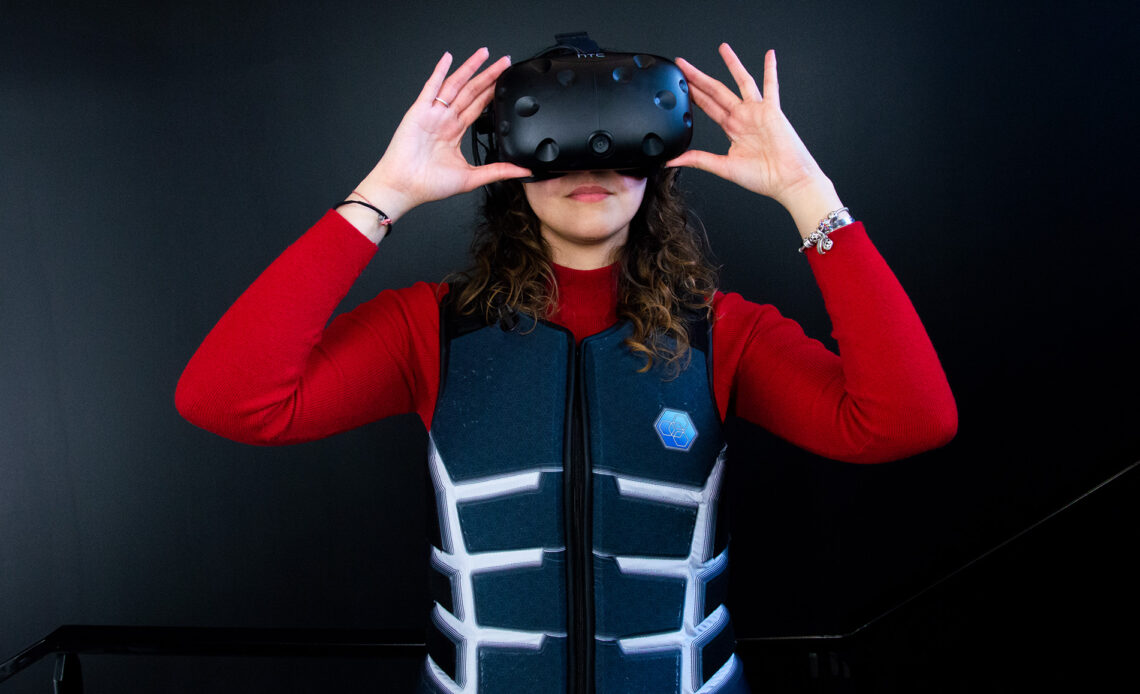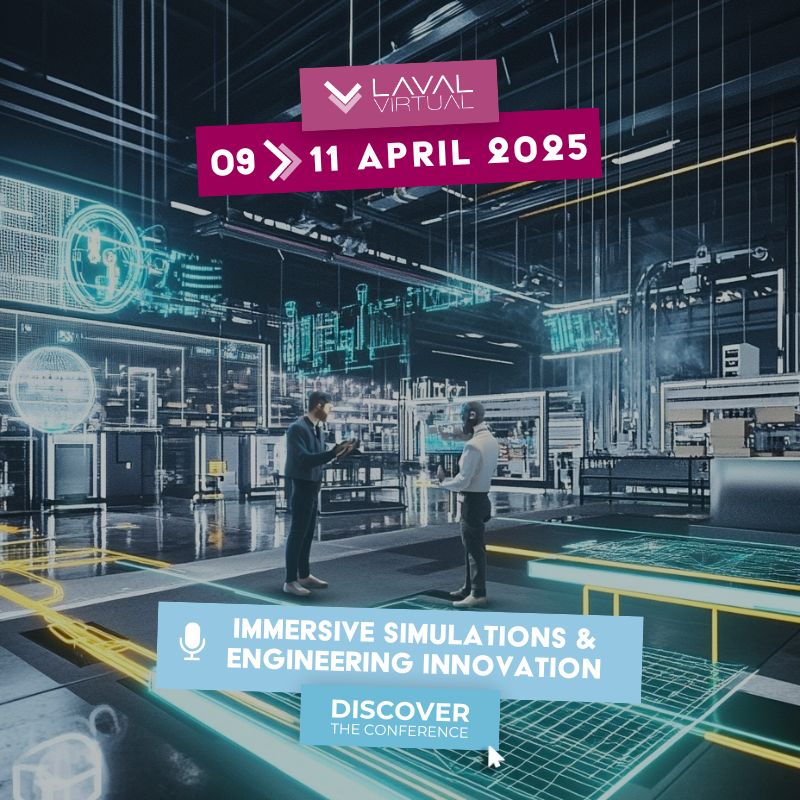
Actronika is exhibiting at Laval Virtual on April 12-14, 2023.
Crédits photos : Actronika
Actronika offers a high definition haptic technology, patented and capable of reproducing the sense of touch in human-machine interfaces. The company has designed a professional haptic vest. Actronika will be exhibiting at Laval Virtual on April 12-14, 2023, on booth A70. Interview with Isabel Trejos, Communication Manager.
Can you present your company?
Actronika offers you haptic solutions that enable the incorporation of touch functions into human-machine interfaces to meet the consumer’s expectations for a safer, smoother and more comfortable user experience.
This technology can be implemented in any device like smartphones to improve the user experience, touch screens in vehicles to reduce distraction while driving, or even in a vest to feel real-world virtual sensations.
What will you exhibit at Laval Virtual 2023?
We presented our product, The Skinetic vest, in the past edition of the event. Have you ever imagined wearing your VR headset and feeling every attack of the enemy, the gentle rain, or the blowing of leaves as you explore unknown territories? The possibilities are endless! For gaming, entertainment, or even marketing, engage users using the sense of touch like never before. Our team is developing a haptic vest called Skinetic to improve the users’ immersion in digital experiences. The Skinetic vest has 20 highly innovative actuators all over the torso, providing various tactile sensations.
In this edition, we want to present the “Creator’s Edition” of the Skinetic vest. This version will be a tool for designers and developers to easily design and create high-definition haptic effects through a haptic ecosystem developed by the company: Unitouch Studio. This intuitive software allows managing the spatialization, sequence control, intensity of each actuator on the vest, and haptic sensation to get the most authentic and immersive experience. Also, it offers a library with 150+ haptic sensations ready to use, which you can play with to assemble complex haptic patterns.
The world of immersive tech was shaken up by the rise of the Metaverse and virtual worlds. What is your opinion on these?
Since the announcement of the metaverse, many companies and players have begun to adapt to the new trends, meaning that they will seek to implement new technologies that make the new modality more comfortable and immersive for users. It is here where immersive technologies take an increasingly important role. It has been seen that gadgets such as virtual reality headsets seek to have sharper images and even increasing technologies such as eye tracking to make the experience as “natural” as possible. In addition to improving visual and auditory experiences, other actors have appeared that seek to add a sense of touch to these virtual experiences to make them closer to real sensations, such as gloves or even haptic vests, to obtain a more “natural” experience.
Based on the above, I firmly believe that these new players in the market have great potential as it means that these innovations that they offer are or will become the tools that will make the concept of “metaverse” and all the interactions that take place there more pleasant and intuitive for the users. After all, even though we know it is a virtual experience, the aim is to make it as close to real-world interactions as possible.
How do you see the VR world in 10 years?
Although some people believe VR is dead or in decline, I don’t see it this way. VR, as it has done over the last few years, will continue to become more and more relevant not only in the gaming industry but in a wide variety of industries, if not all. Companies need to evolve along with their environment to exist. For this reason, it is natural that companies pay attention to adapting their activities to the virtual environment.
We can see different cases of this technology usage, such as museums presenting virtual exhibitions where users can interact in new ways with works of art. Another possibility can be in the military field, where virtual simulations have become a tool to prepare soldiers for situations that may arise in the real world.
Different companies developing products in the VR field are continuously evolving to adapt to the market’s needs to make virtual experiences more immersive and intuitive. Not only aiming at the comfort of the companies but also end-consumers. The latter is an increasingly growing consumer group due to the large offer of games and virtual interactive environments such as VR chat.


